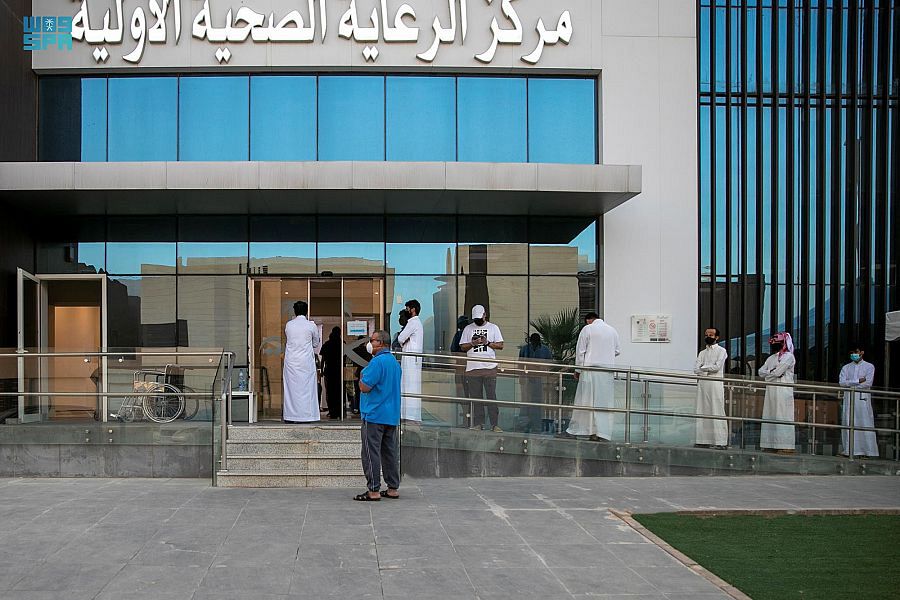
Forecasts are reevaluated every week, expert tells Arab News
Officials predict cases will not peak until mid-June
ISLAMABAD: In a televised address on May 15, Pakistani Prime Minister Imran Khan expressed relief that the number of COVID-19 cases in his country were lower than forecast. “As per our predictions, by May 14 Pakistan was expected to have 52,695 cases and 1,324 deaths,” he told the nation.
According to government statistics, however, the official figure at that point was slightly over 37,000 infections, while 803 people had died. “Thankfully, we are still below projections,” Khan said.
Those projections are determined by a team of scientists and doctors. One of the former is Ahsan Ahmed. He and his team, who are based throughout Pakistan as well as abroad, use the “Susceptible-Exposed-Infectious-Recovered (SEIR)” mathematical model to predict the development of the COVID-19 outbreak in Pakistan.
The SEIR model divides the population into four categories: Those who are susceptible to the virus and could potentially catch the disease; the exposed — people who might have the virus but show no symptoms; the infectious — active cases; and the recovered.
The same model has been used successfully in the past to understand the outbreak of Ebola, SARS and Zika. It was also used in Wuhan, China, to assess how COVID-19 would spread.
Ahmed told Arab News over the phone from Islamabad that his team is “meticulous” when extrapolating data from across the country, ensuring that there are few if any, inaccuracies.
Their estimates are revised weekly, taking into account the actual numbers, and presented to Pakistian’s National Command and Control Centre (NCOC), which is tasked with devising a strategy to counter the pandemic in the country. A private data-modeling company in Karachi called Love For Datam and officials from UNICEF are also providing technical support. Love for Data was unavailable for comment when contacted by Arab News.
When comparing official figures with forecasted ones, Ahmed explained, “The trend we are noticing is that they are pretty much aligned.”
Both Ahmed and Atta-ur-Rehman, the additional secretary at the Ministry of National Health Services, Regulations and Coordination, declined to comment on forecasts for the near future, explaining that those figures would only be disclosed to the NCOC. However, Minister for Science and Technology Fawad Chaudhry has tweeted that Pakistan is expected to see an increase in COVID-19 cases up until mid-June.
Independent forecasters predict the same. Jan Fiete Grosse-Oetringhaus and Zafar Yasin, who are affiliated with the European Organization for Nuclear Research (CERN) in Geneva, Switzerland, have done their own modeling using the SEIR model. Yasin agrees with Chaudhry that Pakistan will likely reach its peak of daily cases by the middle of next month.
By then, he estimates, the number of confirmed cases could be between 200,000 and 350,000 or more, and deaths between 4,000 and 7,000.
But Yasin is also concerned that there has been a mismatch between Pakistan’s forecasted figures and its official ones so far, considering the usual accuracy of the SEIR model.
“In Pakistan, it seems that the confirmed cases (based on model predictions) should be 80,000 by now, but we are in the range of 43,000,” Yasin told Arab News. “When the same model was used for different countries in Europe, it gave reliable results, but for Pakistan, it is showing a different trend.”
One reason for this discrepancy, Yasin believes, could be that Pakistan is not carrying out enough tests per capita. At this point, the country should be testing between 40,000-50,000 people daily, he said. As of May 20, Pakistan was testing around 13,000 people per day in a population of more than 207 million.
Yasin explained that the fewer people are being tested, the less accurate the SEIR model will be, and the less will be known about the actual number of people infected.
Earlier this month, Science Magazine published a study by international scientists tracking the spread of COVID-19, which estimated that for every known case there are five to ten people who are infected without knowing it.
In his May 15 address, the prime minister also claimed that — because the number of COVID-19 cases in Pakistan was below forecasted figures — hospitals still had space to treat COVID-19 patients, and the pressure on the healthcare system was not that great.
But health officials and frontline healthcare workers disagree. Even if government figures are below those forecasted, they say, hospitals are already almost at full capacity with patients suffering from COVID-19.
Dr. Nasir Azim Kakar, a pulmonologist at the Fatima Jinnah Chest Hospital in Pakistan’s poorest province, Balochistan, told Arab News that he and his colleagues receive a large number of patients daily.
“If earlier we were examining five patients a day, now we are examining three times that,” he said. “These days, when we receive patients, we face a major shortage of ICU beds, ventilators, and a shortage of staff, especially for the ICU.”
With additional reporting by Nazar ul Islam











